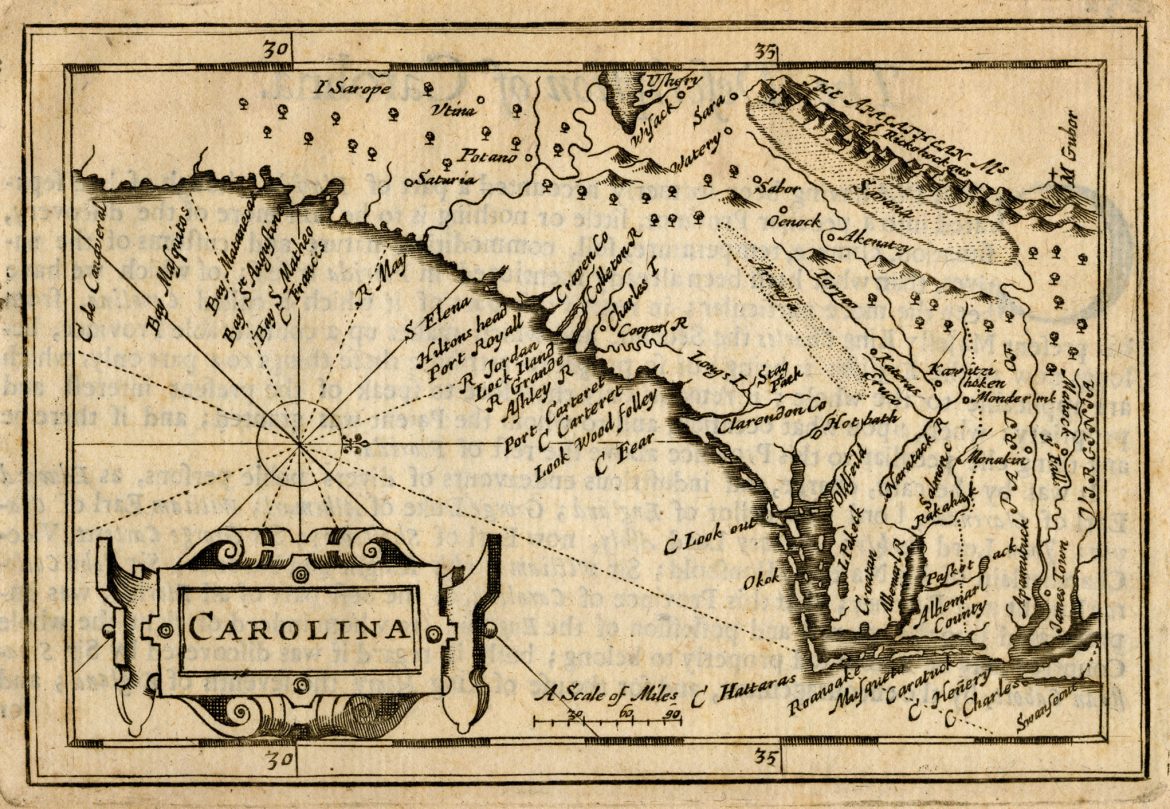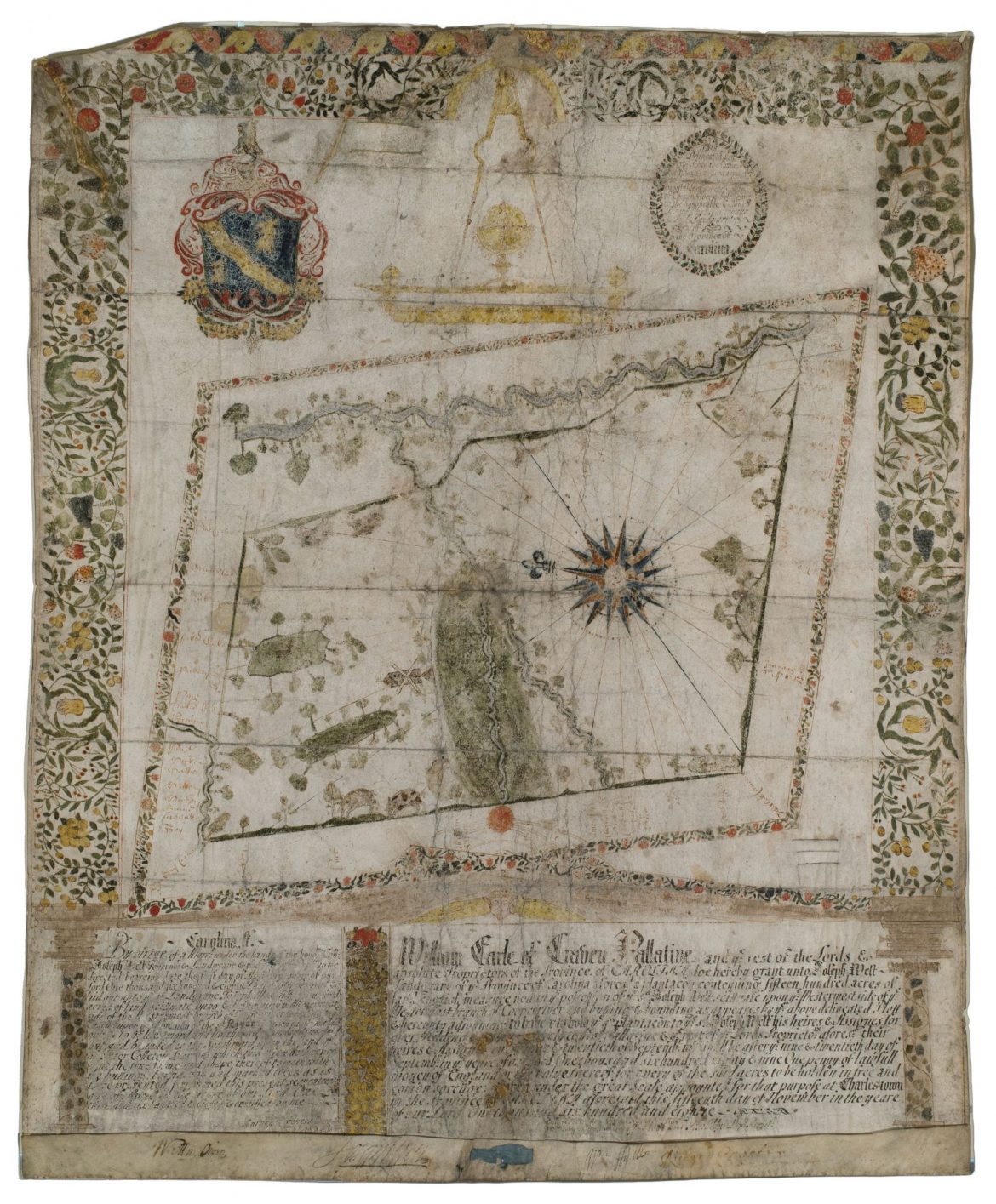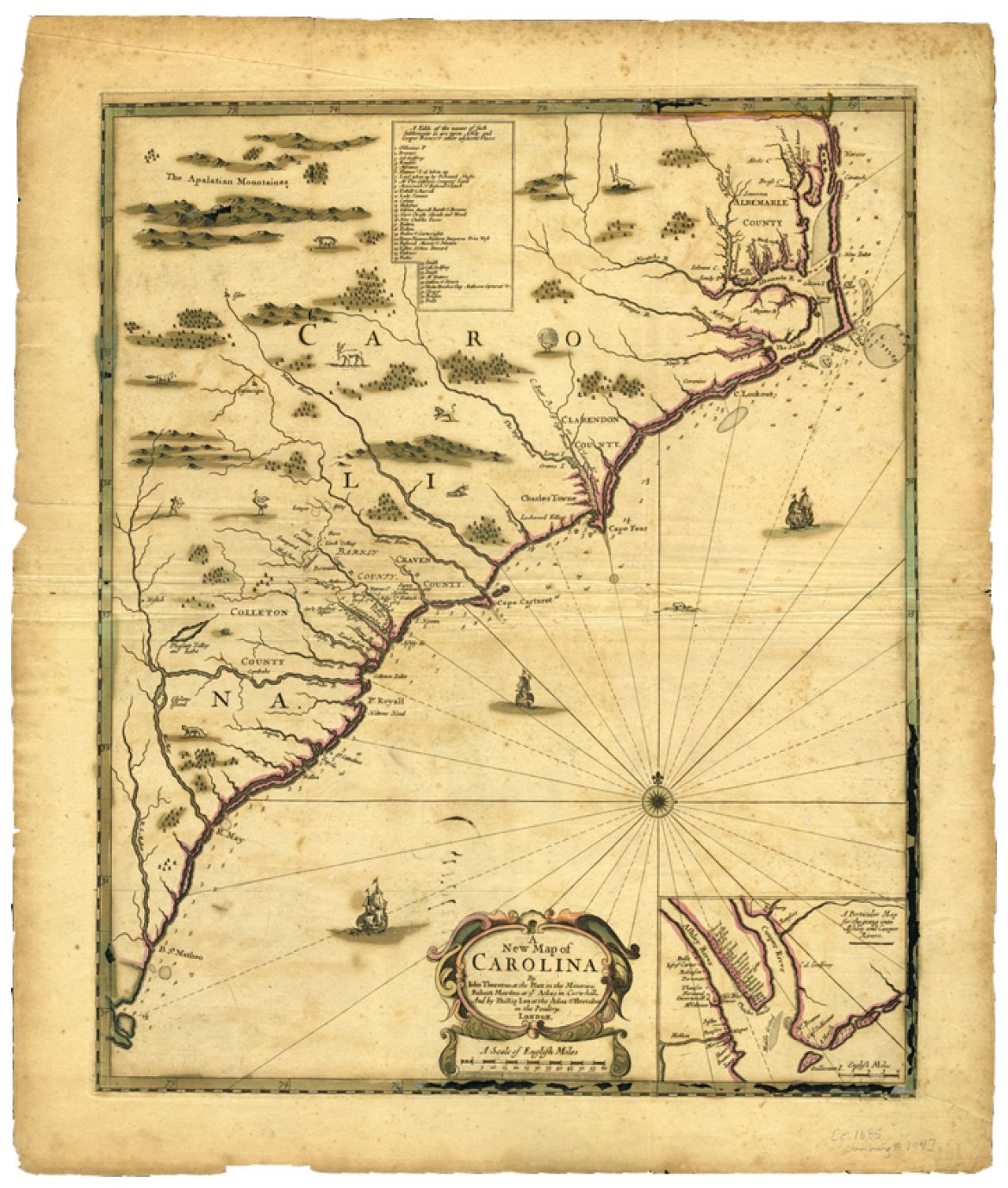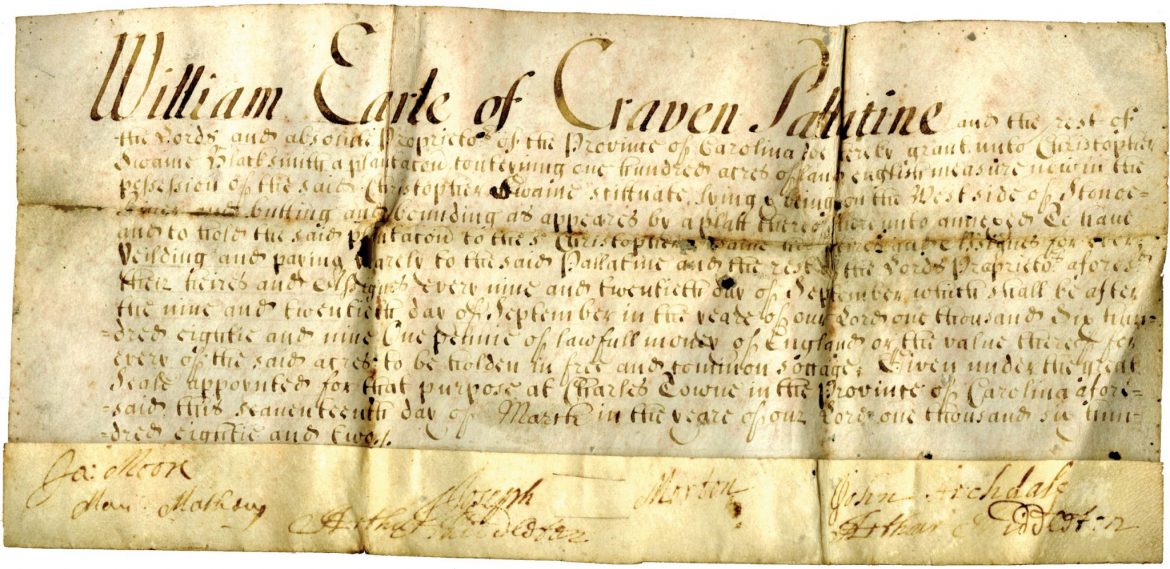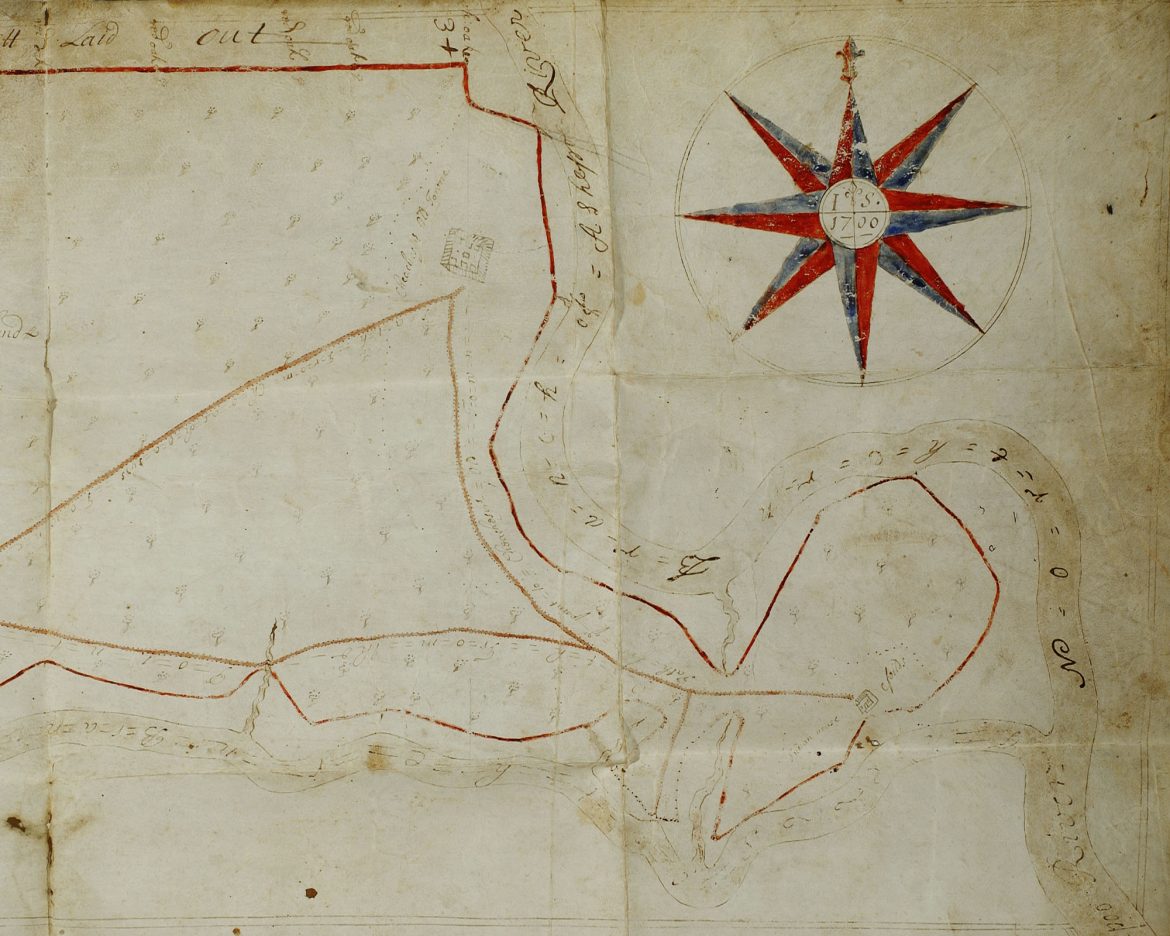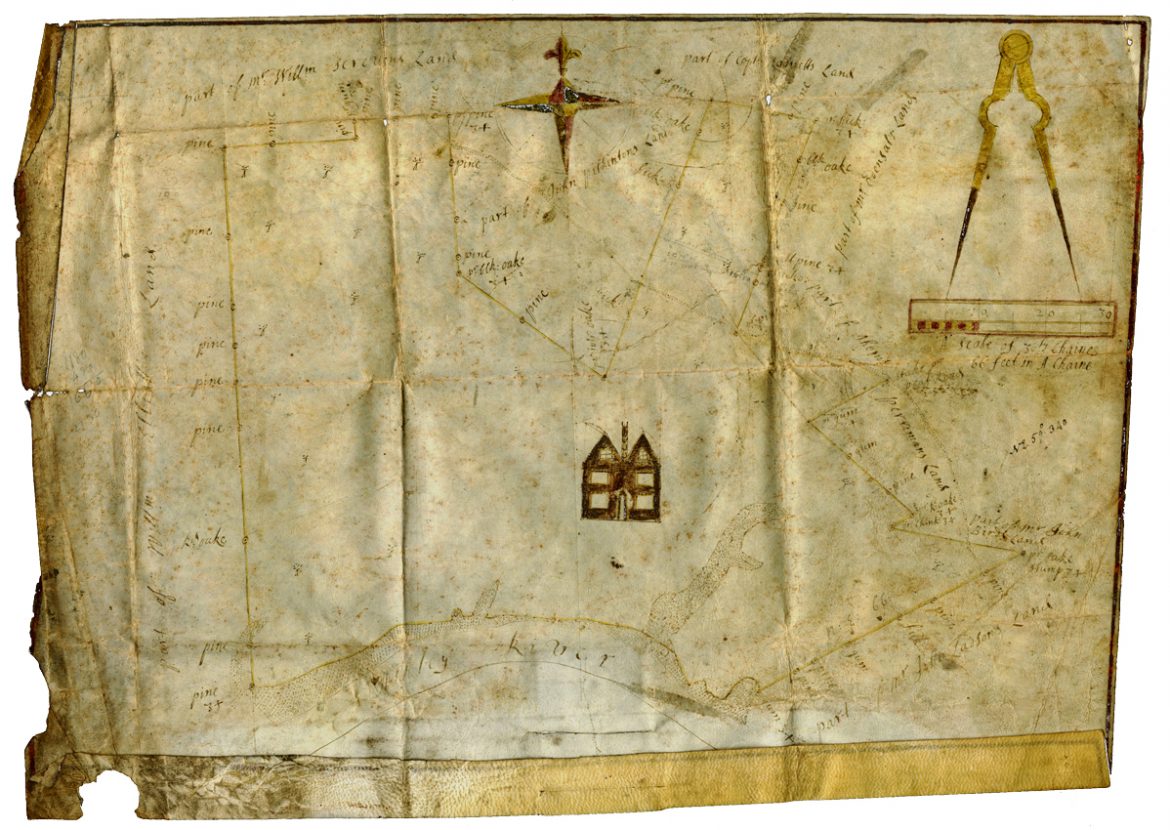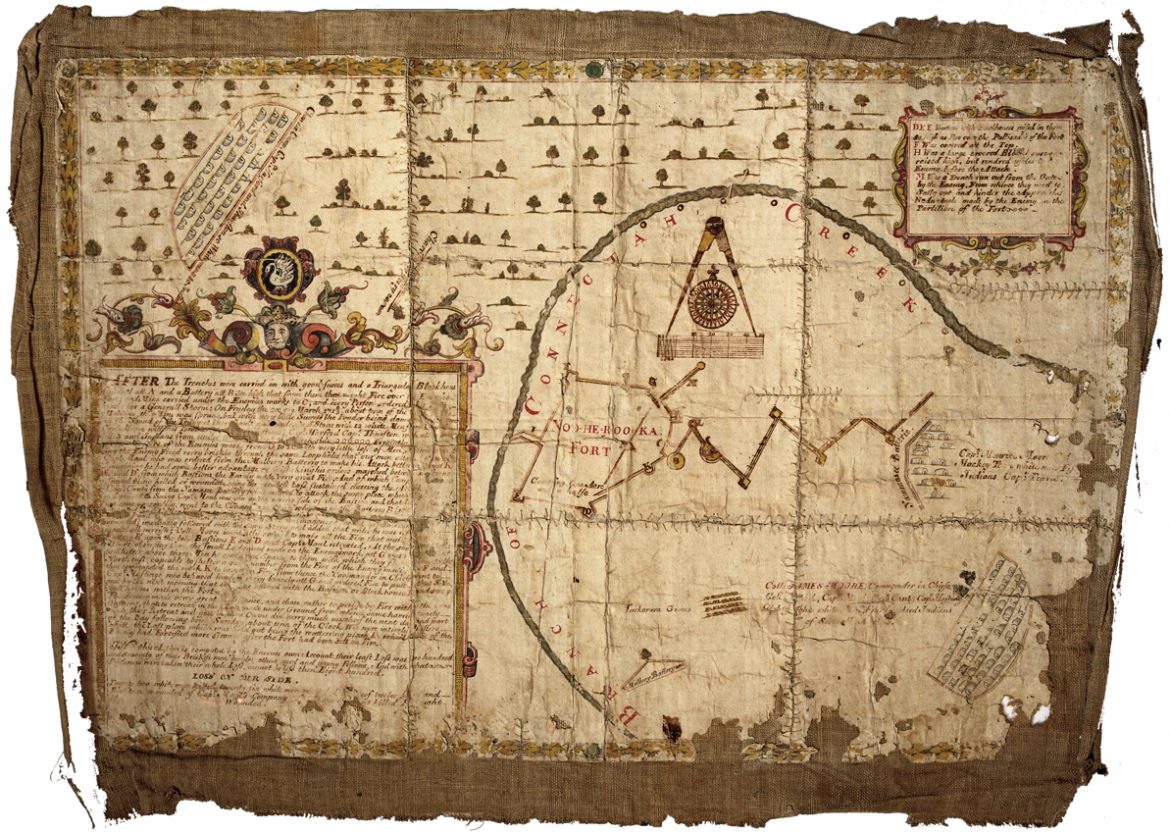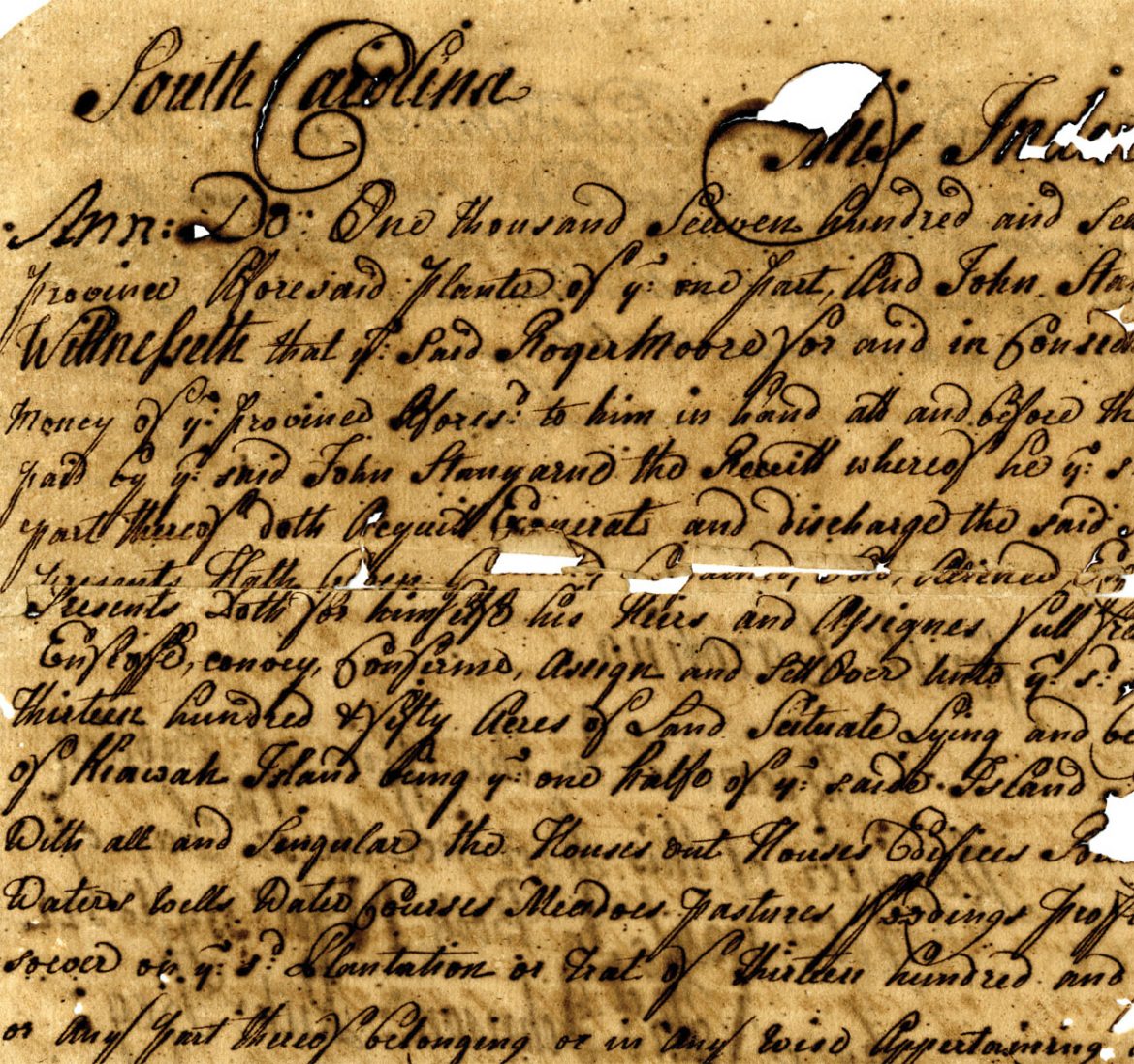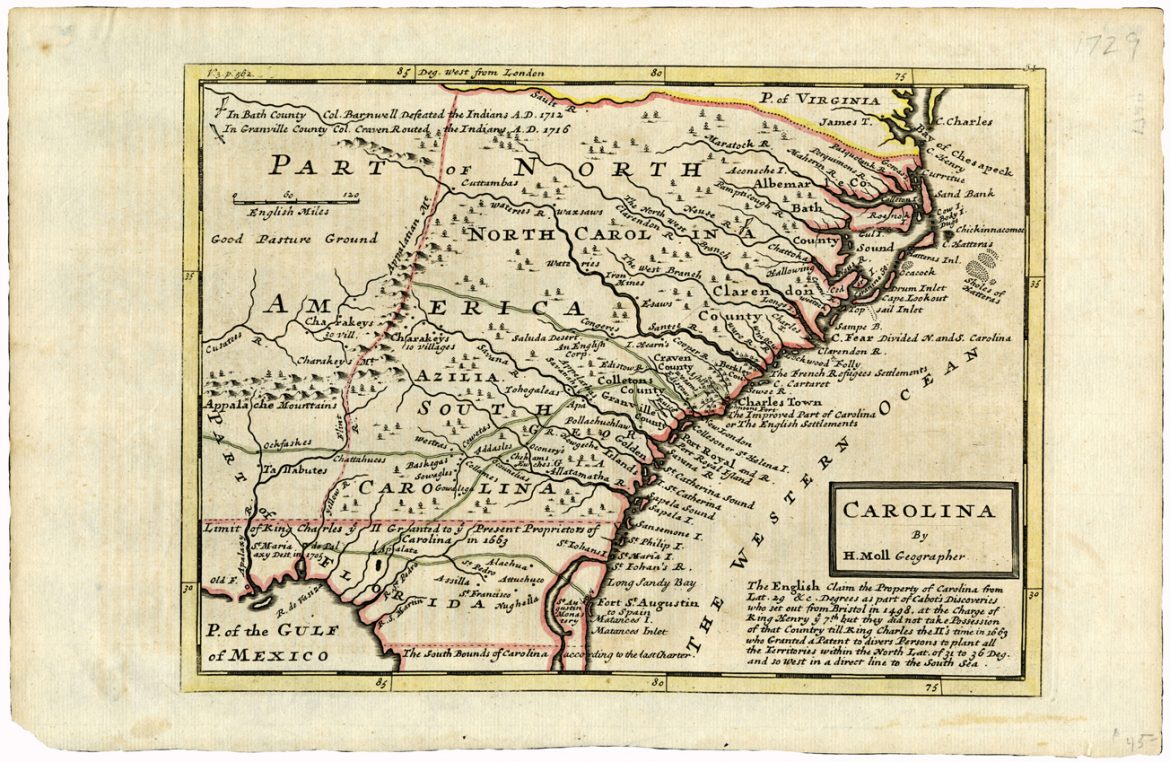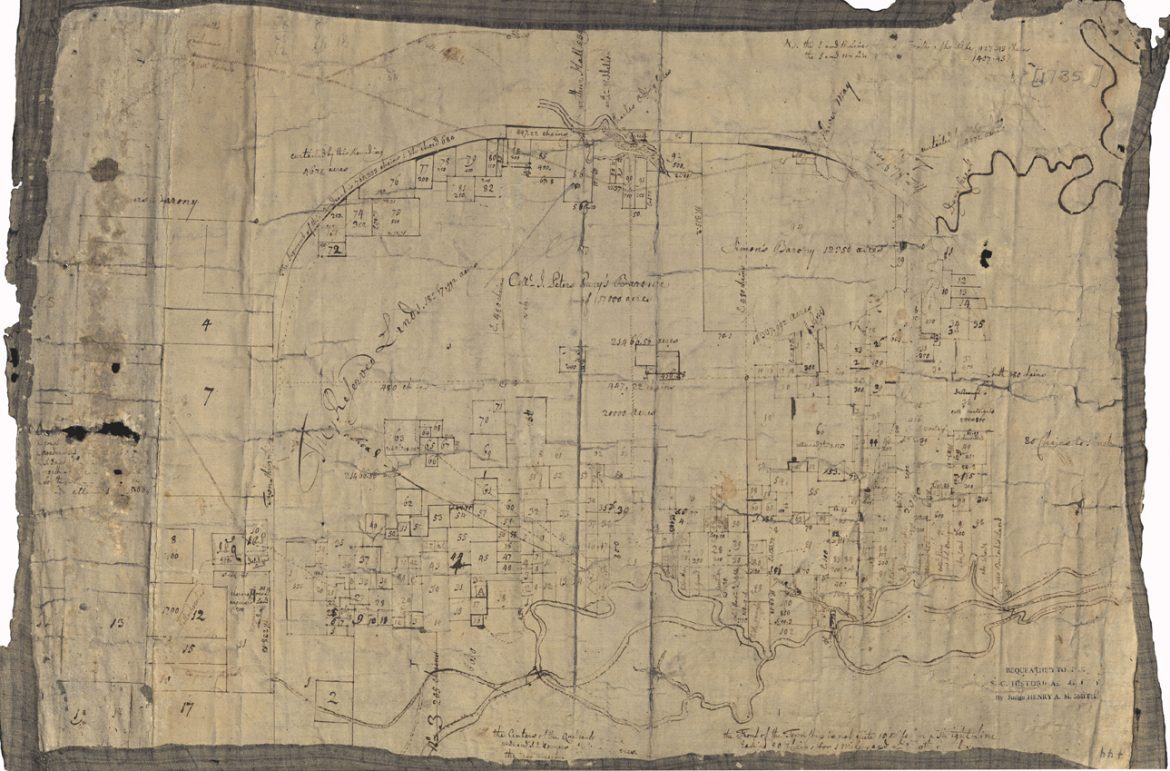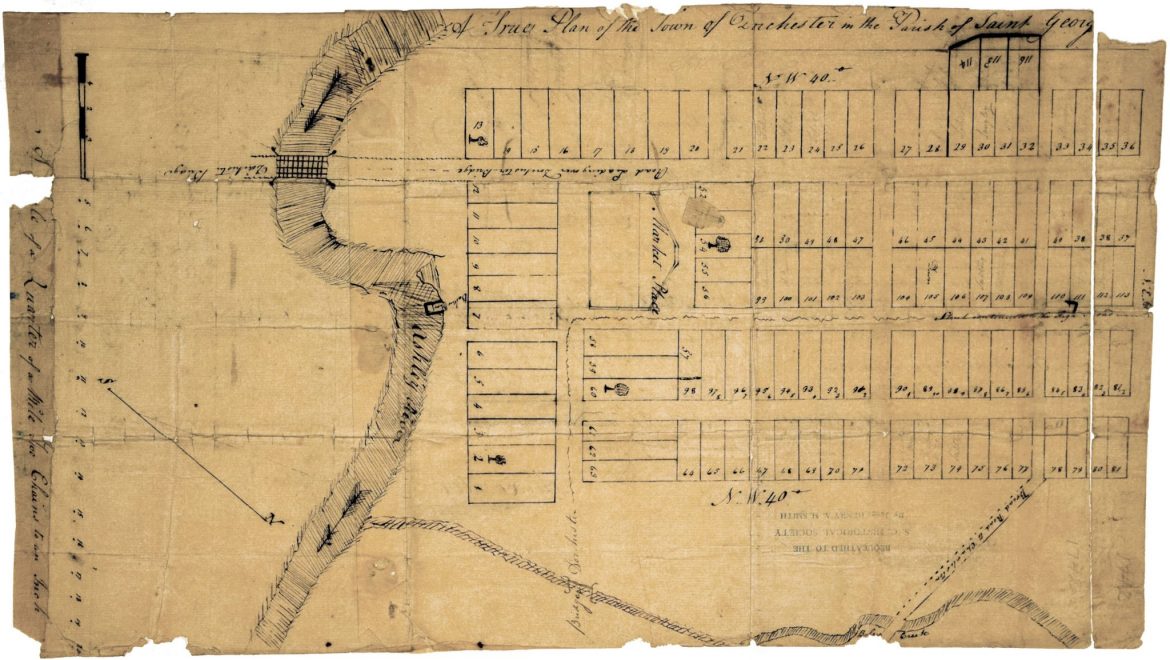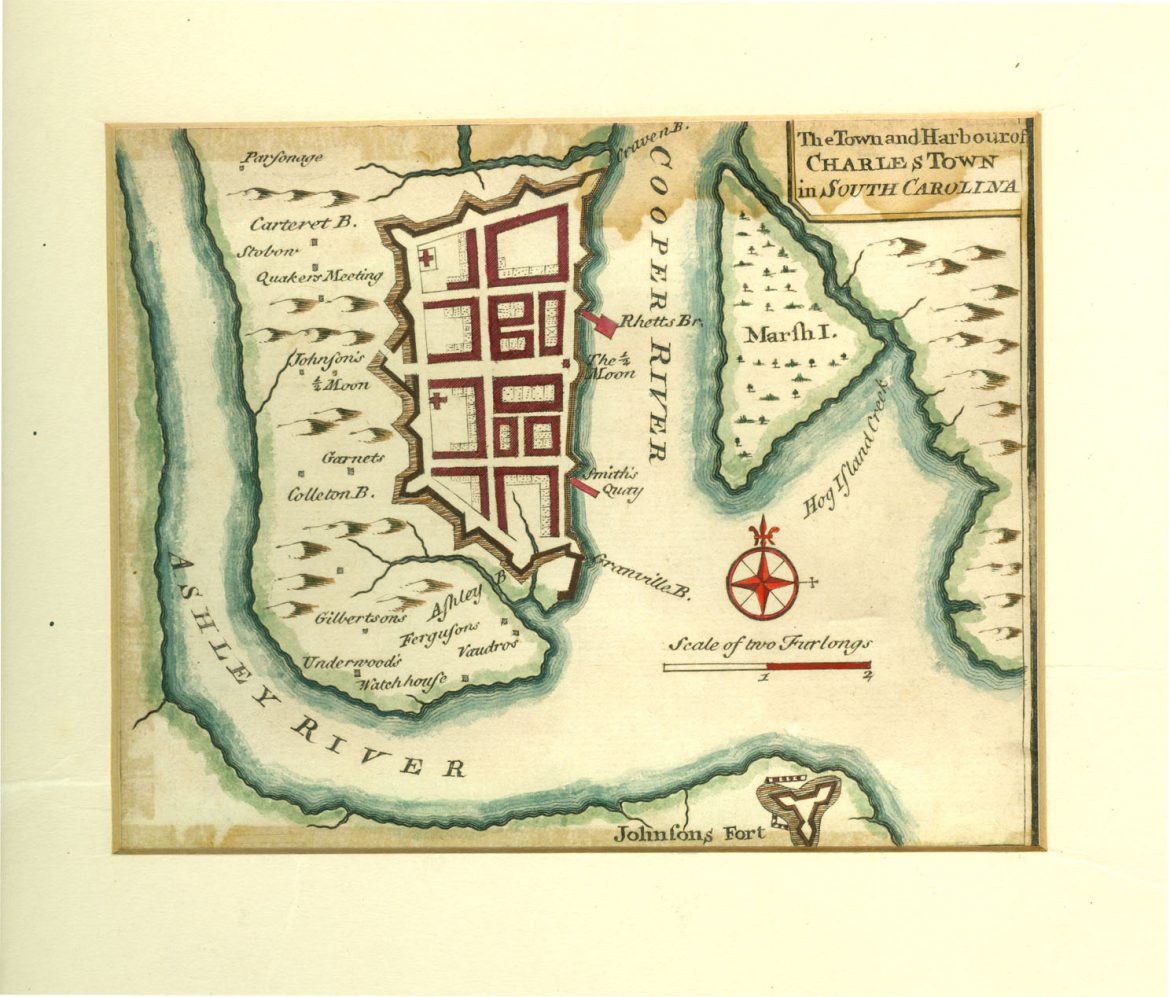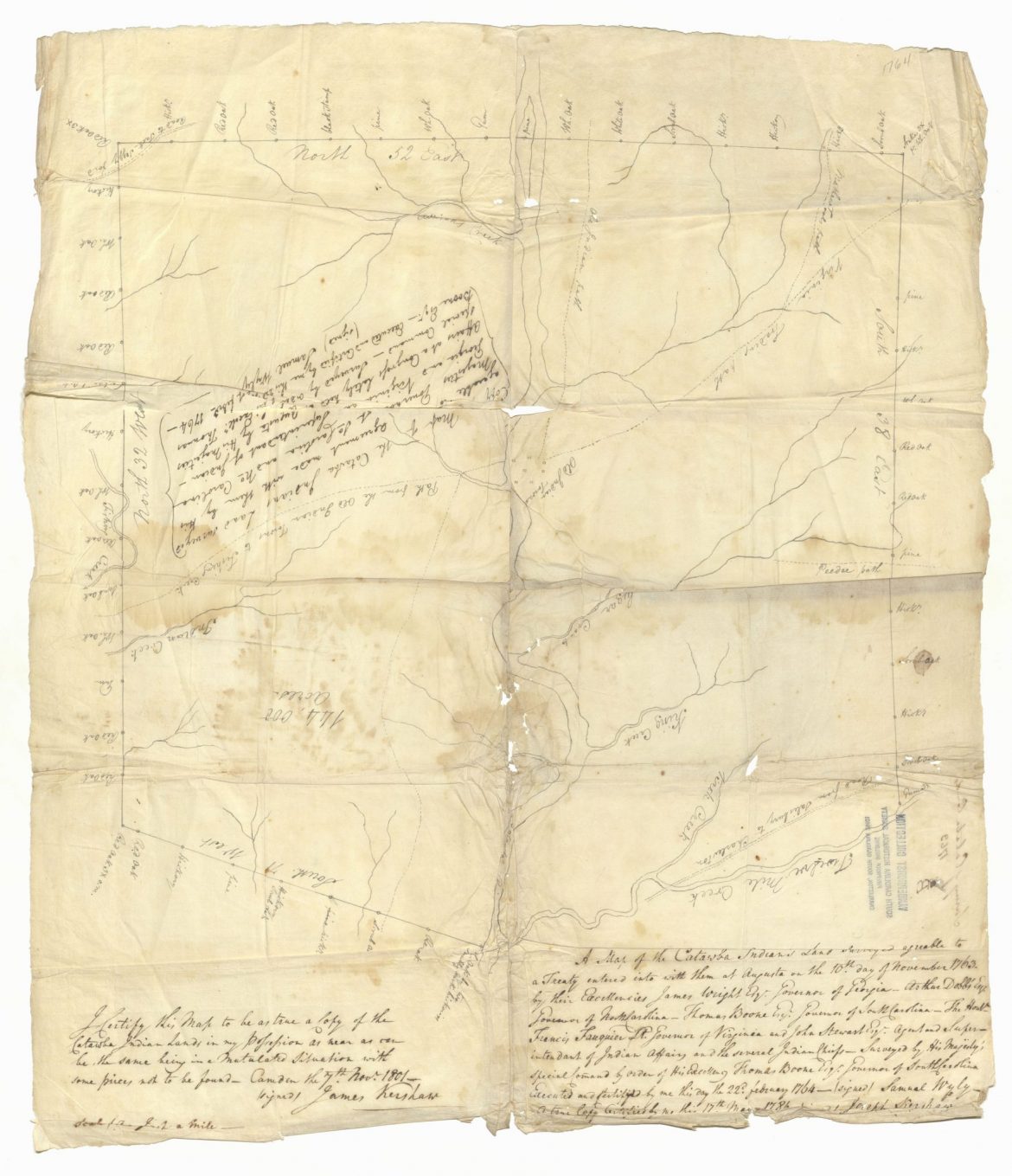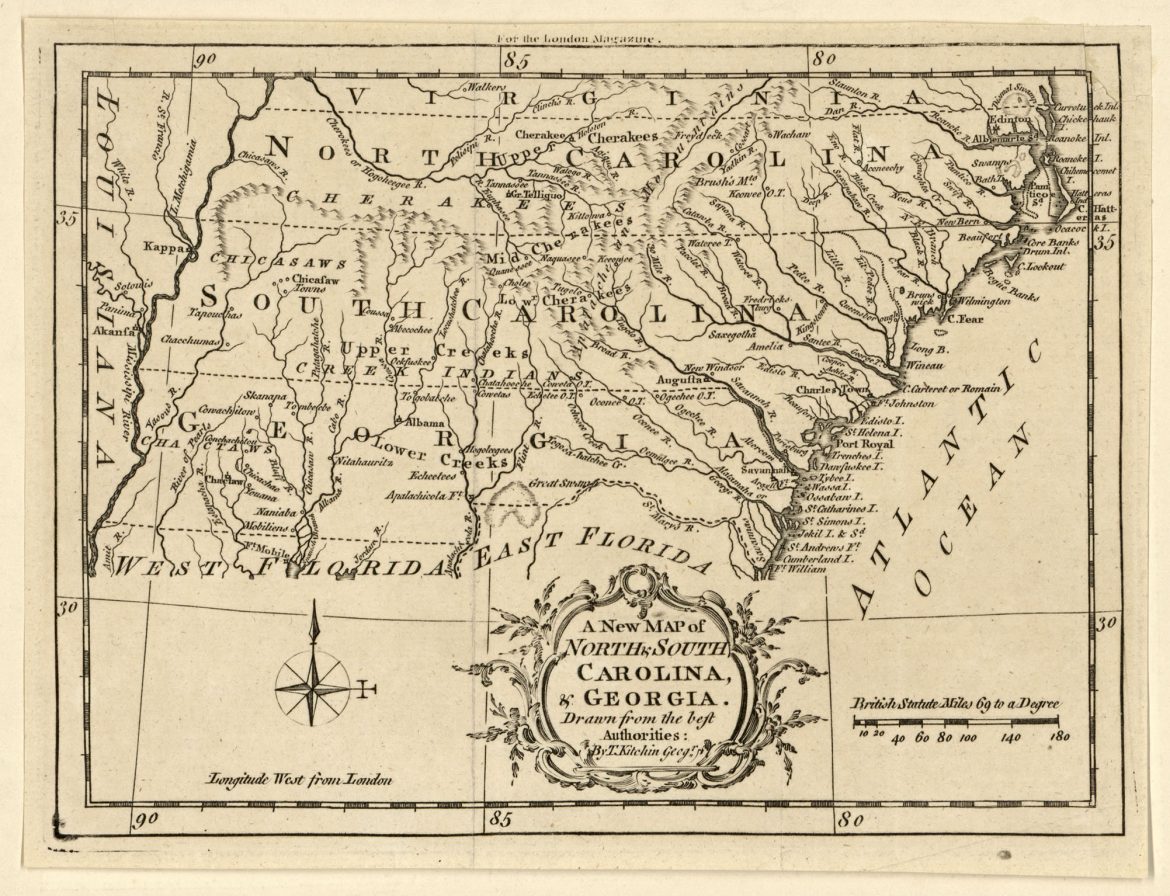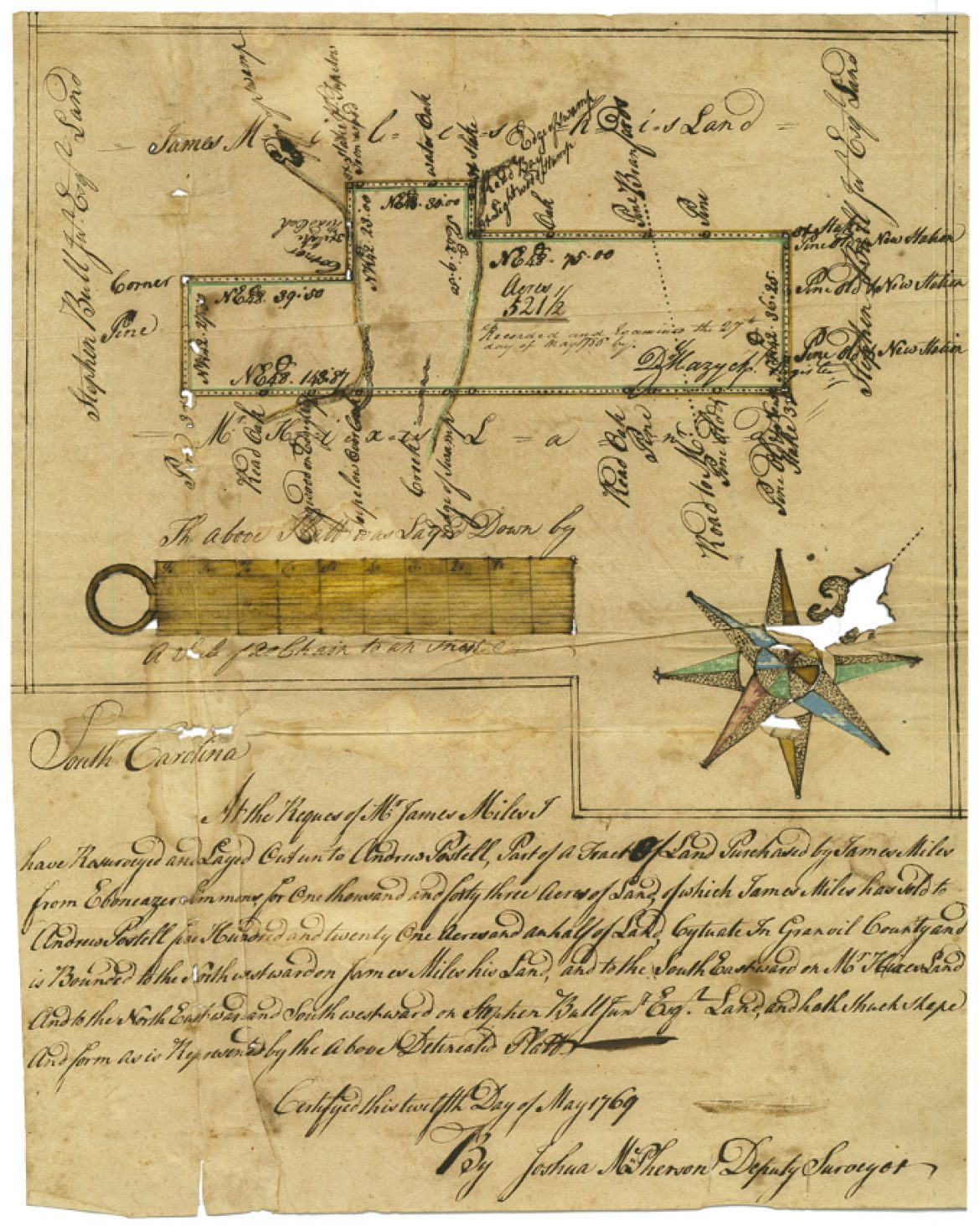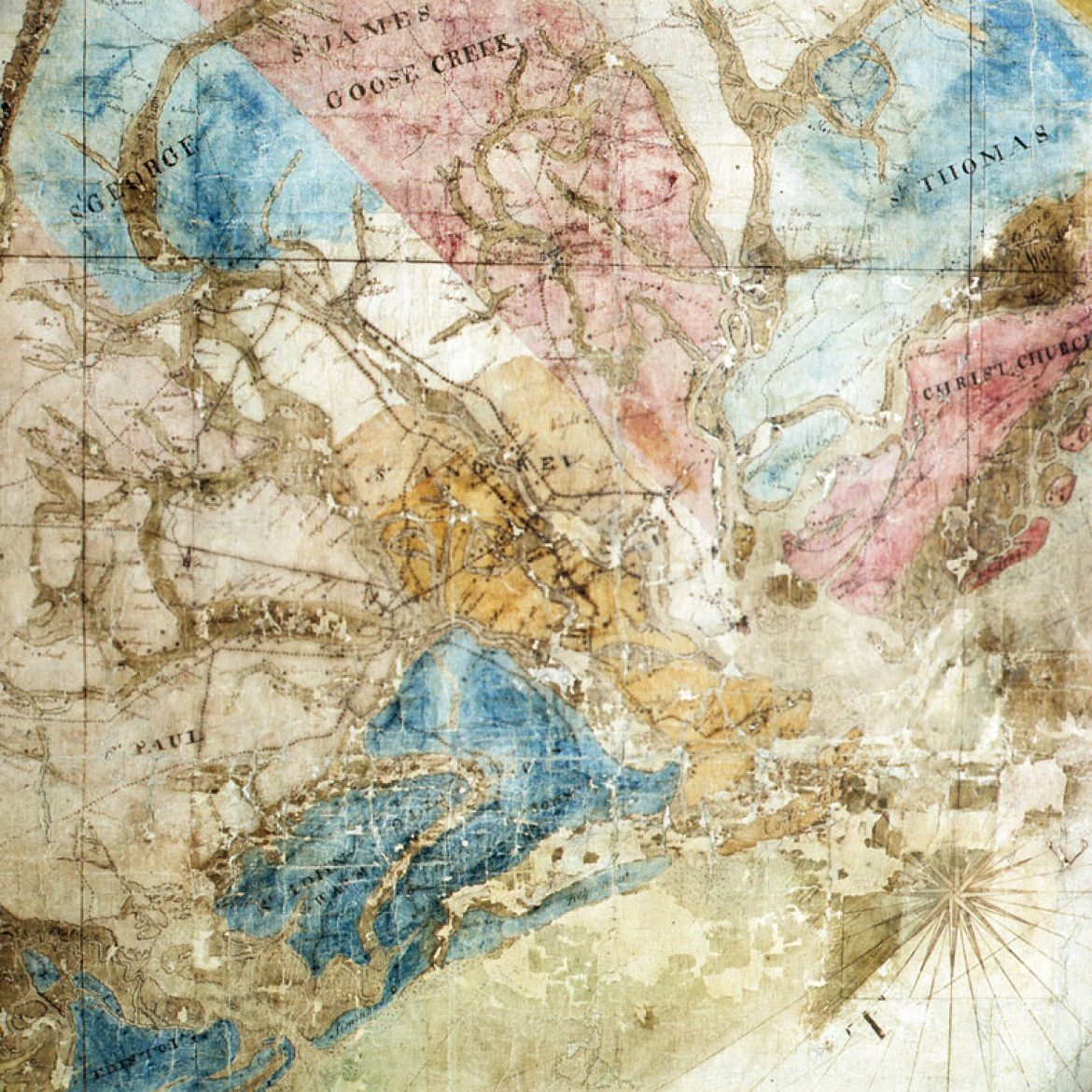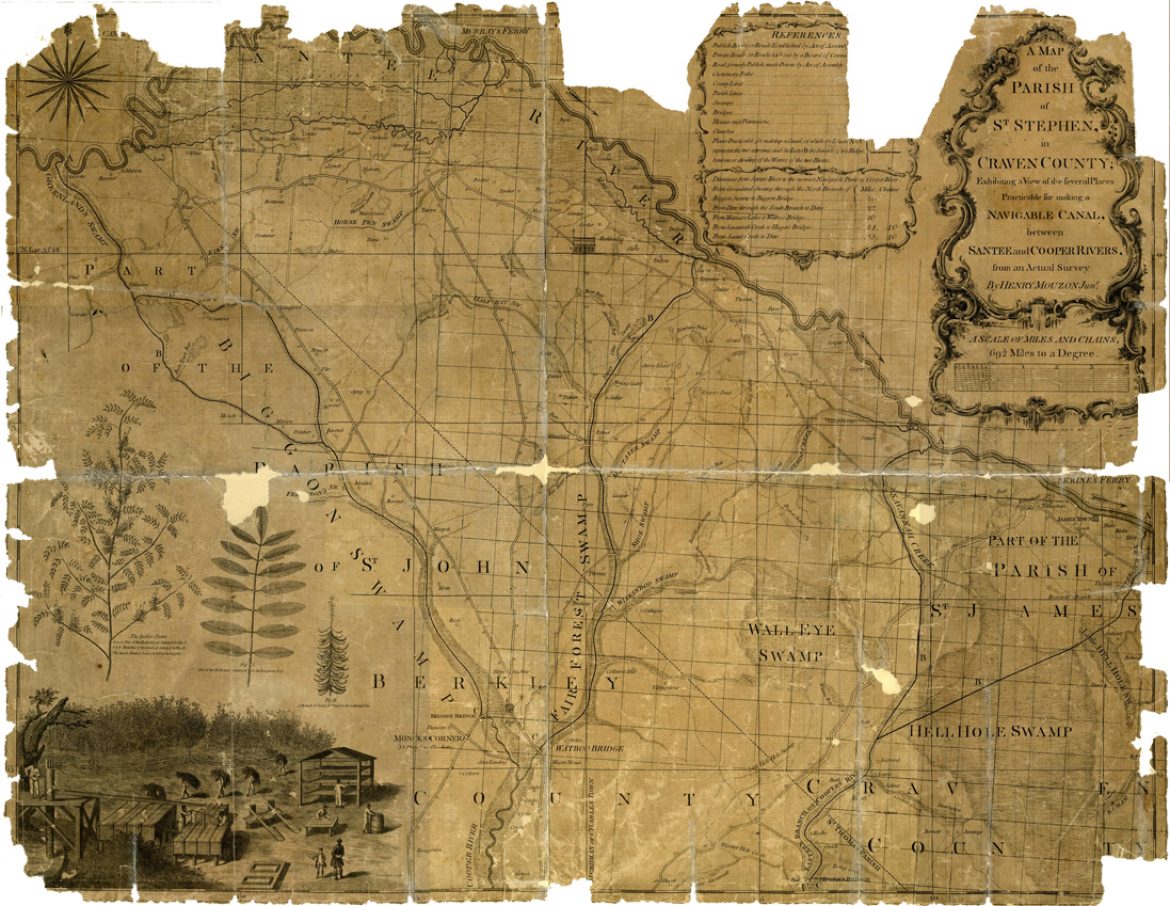Phone: (843) 723-3225
Museum: 100 Meeting St.
Archives: 205 Calhoun St.
Colonial Era Maps & Plats in the Society's Collection
The South Carolina Historical Society houses a rich and extensive collection of historic maps and hand-drawn plats. Spanning over three centuries, from the beginning of the Carolina colony in the 1670s to the late twentieth century, these represent every region of the Palmetto State and are remarkable not only for their visual appeal, but also for the wealth of information they provide on the physical spaces of generations past.
